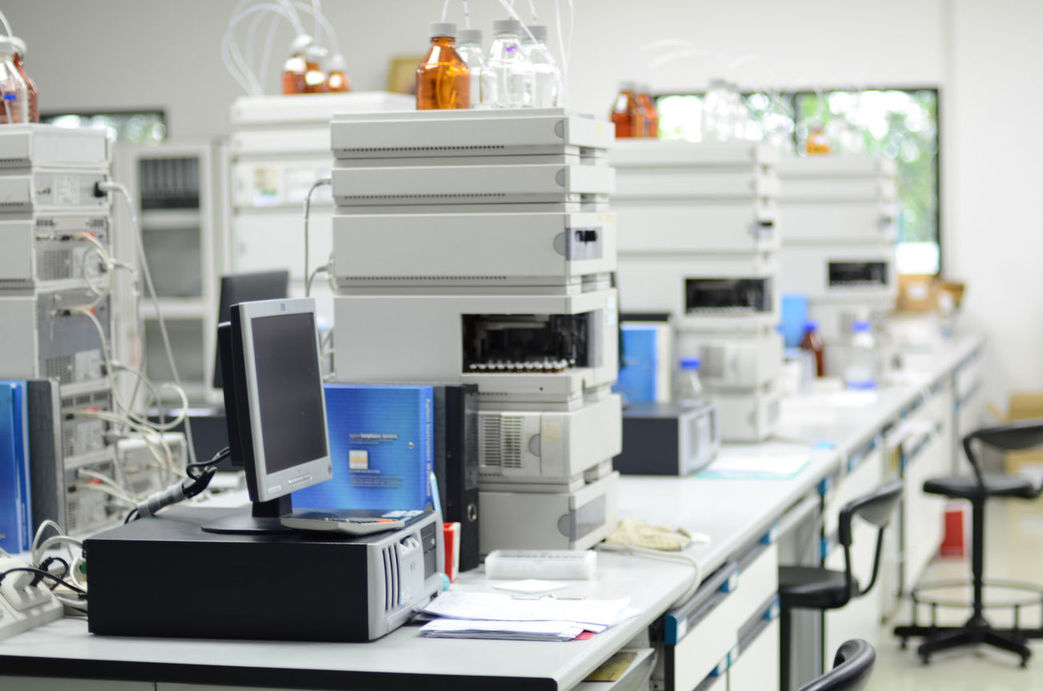Glycoinformatics-assisted NMR-based Glycan Structure Prediction Service
Empowering Precision in Glycan Structure Prediction with Glycoinformatics and NMR
Reaching computational predictions of spectroscopic data, like nuclear magnetic resonance (NMR), infrared spectroscopy (IR), and mass, has become a commonly utilized method for aiding in the prediction of glycan structure. Nevertheless, traditional quantum mechanics simulations still demand significant effort. CD BioGlyco develops machine learning methods to correlate experimental and computational NMR data to facilitate
Analysis/Prediction Service. Therefore, we provide our clients with thorough
Glycoinformatics-assisted Structural and Functional Prediction Services, which encompass NMR-based,
IR-based, and
Mass-based Glycan Structure Prediction Service. The details of our glycoinformatics-assisted NMR-based glycan structure prediction service are as follows:
Glycan structures and interaction analysis with glycoinformatics
We use glycoinformatics tools to analyze the chemical structure and properties of glycans to predict glycan structures. By using glycoinformatics tools to generate plausible glycan structures and use them as models for subsequent simulations and calculations. In addition to predicting the structure of glycan molecules, we help you understand the mechanisms by which glycans interact with other biomolecules. By modeling and simulating different types and quantities of carbohydrates, we help you better grasp the interactions between multiple biomolecules involved in complex reaction networks in organisms.
Predictions with NMR observations
At the same time, we compare the generated glycan structure with the NMR observations and determine the optimal glycan structure through calculations and simulations. This is done by calculating the difference between the NMR observations and the model and using an optimization algorithm to adjust the glycan structure to best match the experimental data. The NMR technique provides information about the structure and conformation of glycans. Structural and conformational information about glycans is obtained by measuring the interactions between different nuclear spins.

Publication
Technology: Machine learning
Journal: Frontiers in Natural Products
IF: 4.362
Published: 2023
Results: This article focuses on a method called DU8ML, which combines machine learning and density functional theory (DFT) techniques for calculating NMR chemical shifts and spin-spin coupling constants (SSCCs) of large natural products. The DU8ML method is capable of calculating the NMR parameters with high accuracy in a short time, by using experimental data for training in machine learning. It has been used to obtain quantum mass NMR chemical shifts at a low computational cost and also to establish correlations between experimental and computational data to determine the most probable structures. The article also mentions the application of the DU8ML method in structural characterization, including the detection of erroneous atomic connections, stereochemical errors, and other problems related to structural characterization.
 Fig.1 Schematic illustration of the application of machine learning in computational NMR-assisted determination of molecular structure. (Cortés, et al., 2023)
Fig.1 Schematic illustration of the application of machine learning in computational NMR-assisted determination of molecular structure. (Cortés, et al., 2023)
Applications
- In drug discovery, the prediction of glycan molecular structures is used to design and synthesize glycoconjugates with specific pharmacological activities.
- NMR techniques are utilized to analyze and predict the structures of unidentified glycan molecules, facilitating the discovery of new glycan compounds and their biological functions.
- It helps scientists understand the mechanism of glycan structure in the development of diseases and provides a theoretical basis for disease research.
Advantages
- NMR-based prediction techniques can be computationally simulated, greatly reducing prediction time and improving efficiency.
- NMR techniques provide high-resolution structural information that can accurately determine the conformation and bonding mode of glycan molecules. We verify the accuracy of the predictions by comparing them with experimental data.
- NMR-based prediction techniques can be applied to different types of glycan molecules, including monosaccharides, oligosaccharides, and polysaccharides.
Frequently Asked Questions
- What are the advantages of glycoinformatics-based prediction over traditional structural prediction methods?
- The prediction accuracy of glycan structures can be improved by combining glycoinformatics and NMR techniques. Glycoinformatics provides a large database of known glycan structures, which in combination with NMR data for validation and correction makes the prediction results more accurate and credible.
- How to improve the accuracy and reliability of glycan structure prediction?
- We capitalize on the complementarity of information between experimental data and structure prediction techniques. By combining experimentally measured NMR and other experimental data with computational results, the accuracy and reliability of structure prediction can be improved.
CD BioGlyco provides a comprehensive glycoinformatics-assisted NMR-based glycan structure prediction service. By combining glycoinformatics tools and NMR technology, we quickly and accurately predict the structure of complex glycans and help our clients to solve the difficulties in glycan structure analysis. If you are interested in our service, please feel free to contact us.
Reference
- Cortés, I.; et al. Machine learning in computational NMR-aided structural elucidation. Frontiers in Natural Products. 2023, 27(2): 1122426.
For research use only. Not intended for any diagnostic use.
Quick Links
Related Services



 Fig.1 Schematic illustration of the application of machine learning in computational NMR-assisted determination of molecular structure. (Cortés, et al., 2023)
Fig.1 Schematic illustration of the application of machine learning in computational NMR-assisted determination of molecular structure. (Cortés, et al., 2023)


